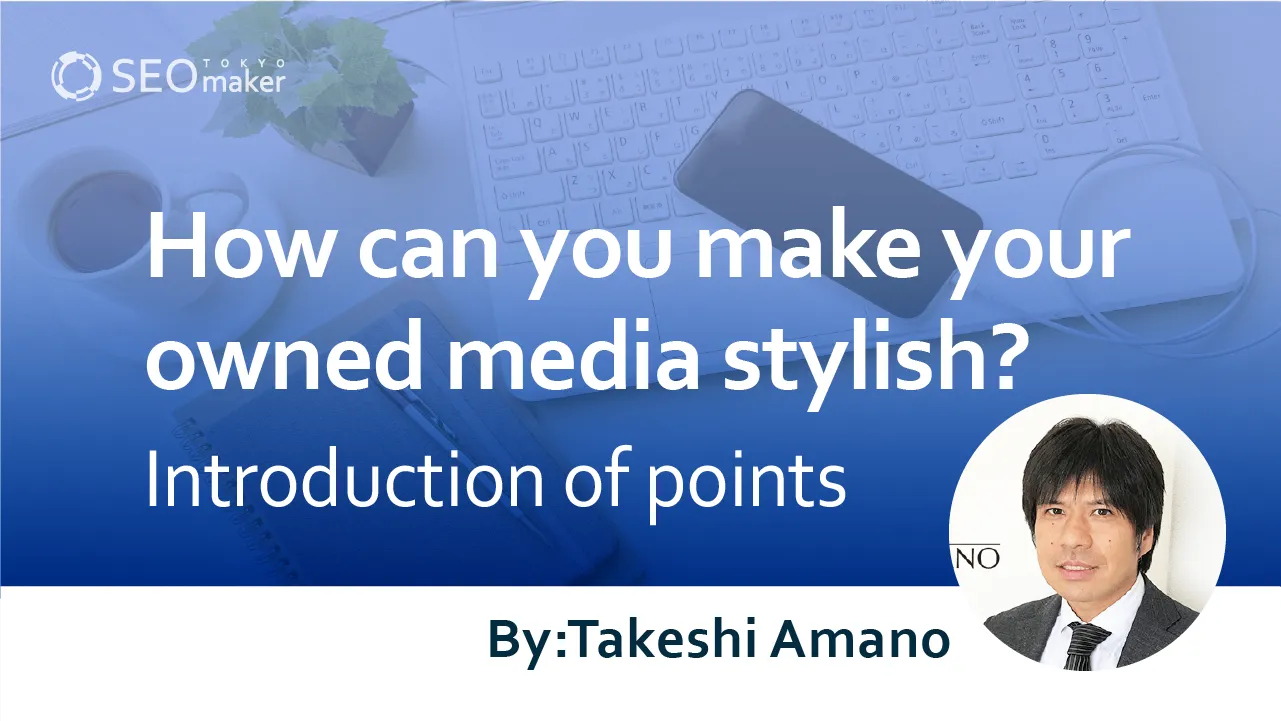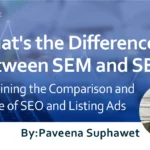How can you make your owned media stylish? Introduction of points
contents

Some companies might be thinking about constructing a stylish owned media. How exactly can one achieve a stylish design?
In this article, we’ll introduce the characteristics and points of stylish owned media, including methods for creating designs. Companies planning to build stylish owned media should definitely take note.
Five Characteristics of Stylish Owned Media
Owned media that users perceive as “stylish” have their own characteristics. Here, we introduce five features of owned media considered stylish:
- The First View Captures User Interest
- Information is Simple
- Utilizes Two Colors
- Consistency Across Pages
- Uses UD Fonts
The First View Captures User Interest
The first impression of your owned media is significantly important. To construct owned media considered stylish, prioritize the first view.
Especially if the first view includes animations or videos, it can capture user interest and be perceived as stylish. Putting effort into the first view is crucial from a design perspective.
Information is Simple
One characteristic of owned media considered stylish is its “simplicity.” Owned media that only presents necessary information in a simple manner, such as site menus and text volume, is perceived as stylish.
When the site’s sections and text amount are kept to the essential minimum, the design gains whitespace, making it feel stylish. offline, owned media crammed with information or advertisements can give a cluttered impression, not considered stylish.
Design tends to be perceived as more stylish the simpler it is. Therefore, if you aim to build stylish owned media, strive for a design as simple as possible.
Utilizes Two Colors
Rather than using many colors, limiting your palette to two colors can make it easier for your media to be perceived as stylish. Deciding on a main color and a sub-color and keeping the design simple can make your owned media more visually appealing.
When choosing two colors, opt for a set that gives a similar impression. For example, “black” and “white” both convey a calm impression, making the overall design appear more sophisticated when used together.
In contrast, owned media that uses a wide variety of colors can appear cluttered and not considered stylish.
Consistency Across Pages
A site that maintains consistency across multiple pages is more likely to be seen as stylish. When users decide to make a purchase on owned media, they typically navigate through several internal pages.
A uniformly stylish design can enhance the user’s desire to purchase. A consistent design allows users to navigate towards conversion without confusion.
However, if the landing page (LP) is stylish but the design of the product purchase screen is completely different, it can confuse users. Therefore, when aiming to create a stylish owned media platform, it’s important to maintain a uniform design across the entire site.
Using Universal Design (UD) Fonts
For the text on your owned media, it is recommended to use “UD fonts”. UD (Universal Design) Fonts are designed to be accessible to a wide range of users, including the elderly, people with disabilities, and foreigners, making it easy for virtually anyone to read.
Such fonts ensure that your owned media can be easily read by all user demographics.
Windows comes standard with the following UD fonts:
- BIZ UDP Gothic
- BIZ UD Gothic
- BIZ UDP Mincho Medium
- BIZ UD Mincho Medium
- UD Digital Textbook Body
Since owned media is accessed by people of all ages, it’s advisable to use UD font designs for readability.
Five Key Points for Styling Your Owned Media
To make your owned media stylish, there are several key points to consider. Here, we introduce five points to help build a stylish owned media platform:
- Clarify the Purpose of Your Owned Media
- Analyze the Designs Preferred by Your Persona
- Adapt Design to Fit the Content
- Ensure Design is Mobile-Friendly
- Incorporate Videos
Clarify the Purpose of Your Owned Media
Before deciding on a design, first clarify the operational purpose of your owned media. Understanding the purpose makes it easier to determine which design to adopt.
For instance, if operating owned media with an affiliate objective, the goal is “to meet affiliate advertising conditions.” Here, content becomes paramount, suggesting a focus on content design.
Conversely, for an e-commerce owned media, the goal is “to sell products.” Therefore, the product sales page should be particularly well-designed to convey a stylish ambiance.
Understanding the purpose of your owned media clarifies which aspects of design to prioritize. Hence, before deciding on a design, start by clarifying the operational purpose of your owned media.
Related Article: What Are the Types of Owned Media? Exploring Purposes, Advantages, and Disadvantages
Analyzing Designs Preferred by the Persona
It’s crucial to analyze the design preferences of your owned media’s persona. After all, it’s the users, not the company, who determine if an owned media platform is stylish.
A persona represents the ideal customer you are targeting. For example, if a luxury inn is operating an owned media, their customers seek an extraordinary experience. Therefore, it’s advisable to design the owned media in a way that offers a taste of the extraordinary.
By analyzing the persona your company targets, it becomes clearer what kind of design you should opt for. When in doubt about the design, try viewing it from the perspective of your target audience.
Related Article: What is a Persona? The Importance in Marketing and How to Define It
Designing According to Content
It’s also essential to decide on the design based on the content. If there’s a disconnect between the design impression of the owned media and its content, users might get confused.
For instance, when posting conventional love-themed content on a women’s romance media, using colors like white and pink, which are suitable for romance, is recommended. Conversely, using black for conventional romance content could perplex users.
Thus, deciding on the design of your owned media based on the content is vital. Along with the content, consider the operational goals and personas to make comprehensive design decisions.
Designing for Mobile Compatibility
Nowadays, ensuring your design is mobile-compatible is also crucial since many users browse sites from their smartphones.
Designs that are optimized for the device used are known as “responsive designs.” Even if a site looks stylish on a computer, it’s a significant loss if it doesn’t display properly on smartphones.
Google, which determines site search rankings, also emphasizes mobile-compatible designs. When deciding on your owned media’s design, always opt for a responsive design.
Utilizing Videos
To make the design of your owned media appear more stylish, incorporating videos alongside text information is recommended. Adding more elements like videos to your owned media can make it feel more stylish to users.
For example, luxury inns often incorporate “exterior and interior image videos” on their landing pages. This approach allows guests to enjoy the ambiance of the inn, potentially increasing their willingness to book a stay.
If you’re aiming to build a stylish owned media, don’t rely solely on text; consider using videos as well.
Three Ways to Decide on Your Owned Media’s Design
Here are three methods for deciding on your owned media’s design:
- Hiring a web production company
- Contracting a freelancer
- Creating the design yourself
Hiring a Web Production Company
The most orthodox method for companies to decide on the design of their owned media is to hire a web production company. Contracting a reputable web production company can achieve the stylish design you desire.
Web design is conducted as a part of web development. When you commission a web development company, discussions will be held based on the concept of the owned media and the content of the materials to decide on the design.
Moreover, the design will be planned with consideration for pathway design and UI/UX, allowing for the effective induction of conversions. Thus, when you desire to create a design of high quality, it is recommended to request the services of a web development company.
Contracting a Freelancer
If you’re looking to save costs on design, hiring a freelancer is also recommended. Freelancers, being individuals, often offer more affordable rates than companies.
To commission a freelance web designer, you can use crowdsourcing platforms or post on job listing sites. Additionally, many freelancers work on weekends and evenings, so they often provide more flexible responses compared to companies.
However, when commissioning a freelancer, it’s important to be cautious in your selection. The quality of the design depends on the skill of the web designer, so choosing incorrectly could lead to unsatisfactory delivery and, ultimately, a cost loss.
Creating the Design Yourself (Paid or Free)
Another option is to prepare the design internally, especially if using WordPress, where many opt to create their design. For those interested in free WordPress designs, famous options include Cocoon, Xeory, and LION BLOG & MEDIA.
These are available for basic use at no cost, and some offer sophisticated designs. If you are interested, please consider downloading and trying them out.
For more sophisticated and stylish designs, purchasing a paid WordPress theme is recommended. Recommended paid themes include AFFINGER, Keni, and JIN. Paid themes often come with support, which can be handy for troubleshooting or operation questions. As it can be more cost- effective than outsourcing, purchasing a premium theme is also recommended for WordPress users.
Three Additional Points to Consider
While creating a stylish design is important, there are three more points to consider:
- Content Quality
- Simplified CV Guidance
- Simplified Category Design
Content Quality
Do not focus solely on stylish design. Content strategy is vital for owned media operation, so ensure you don’t neglect it.
A common failure in the operation of owned media is “focusing on design, but lacking in content.” While the initial impression from the design may be positive, users eventually leave because the content does not provide the information they seek.
Design can be changed even during the operation of owned media. While it is important to focus on stylish design, it is equally crucial not to forget to concurrently devise a content strategy.
Keep the Induction to CV Simple
In the design of owned media, aim to simplify the induction towards conversions (CV). The simpler the pathway design to CV, the higher the conversion rate will be.
For example, in the owned media of an e-commerce site, designing buttons like “Purchase Product” or “More Details” in a straightforward manner makes it easier for users to navigate. Additionally, designing the process from selecting a product to completing the purchase without unnecessary pages can increase the conversion rate.
Thus, focus on simplifying the pathway design to CV, making your owned media user-friendly and easy to understand.
Simplifying Category Design
Even with a stylish design, your owned media can be difficult for users to navigate if the categories are not well organized.
Sites should categorize their content in layers, like “Electronics” → “Refrigerators.” Proper categorization is crucial, as arbitrary settings can negatively impact SEO.
Therefore, when designing categories, consider the following points:
- Set up categories so that child categories fall under parent categories.
- Avoid having too many top-level categories.
- Incorporate SEO keywords into the categories.
By simplifying the category design, you can create a more aesthetically owned pleasing media platform.
Related Article: What Are Internal Links? Key Points for Strengthening SEO with Internal Linking
Summary
Stylish owned media platforms manage to capture user interest right from the first view. Paying attention to design is crucial for enhancing customer engagement. Consider these tips for creating a stylish and sophisticated owned media platform, focusing on UI and UX improvements.




![A comprehensive explanation of keyword selection [for beginners]. How to approach keyword selection, tools to utilize, and tips for success](https://www.switchitmaker2.com/en/wp-content/uploads/2024/05/62_sumne-150x150.webp)





![What is a Description? Explaining the Meaning, Writing Style, and Changing Word Count – [2023 Edition]](https://www.switchitmaker2.com/en/wp-content/uploads/2024/09/what-is-description.webp)










